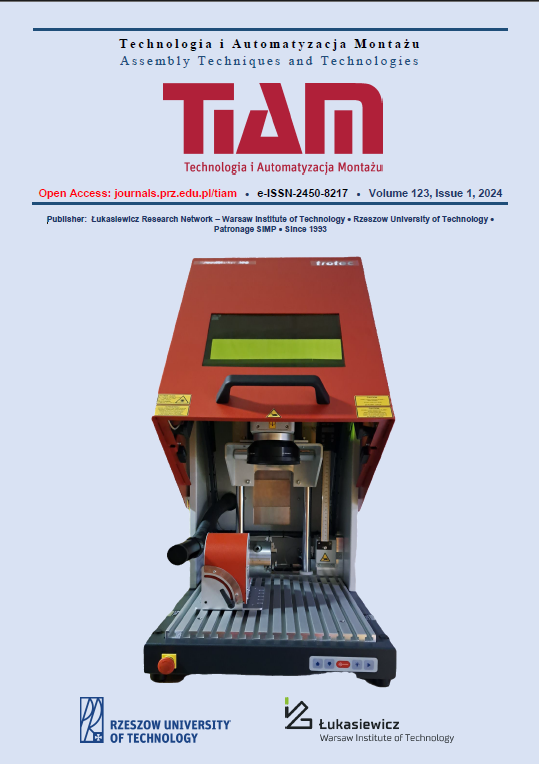Abstract
With the wire electrical discharge machining (WEDM), good quality machined surfaces can be achieved. The WEDM is worth considering for machining fasteners used in assembly processes. This paper presents a study of the WEDM cutting process of aluminum 2017A using an WEDM machine of the FR 400 type. After applying different cutting speeds, the characteristics of the cut surface were evaluated. Despite some differences in the shape of surface profiles and surface morphology noted after WEDM cutting at different speeds, the analysis of variance concluded that the WEDM cutting speed in the studied variation range of 23-125 μm/s has no significant effect on surface roughness. At the highest speed studied, machining efficiency can be increased, affecting cost and energy reduction, while maintaining an acceptable and comparable level of surface quality after WEDM cutting.
References
Gałda L., Pająk D. (2022). Analysis of the application of SiC ceramics as a tool material in the slide burnishing process. Technologia i Automatyzacja Montażu, vol. 1, 45-57. DOI: 10.7862/tiam.2022.1.5
Ho K.H., Newman S.T., Rahimifard S., Allen R.D. (2004). State of the art in wire electrical discharge machining (WEDM). International Journal of Machine Tools and Manufacture, vol. 44, No. 12-13, 1247-1259. http://dx.doi.org/10.1016/j.ijmachtools.2004.04.017
Instruction manual for the FR 400 machine tool (2021).
Jamróz K. (2022). Analysis of the influence of WEDM parameters on the surface quality. Diploma thesis, Rzeszów.
Kuczmaszewski J., Zaleski K. (2015). Machining of aluminum and magnesium alloys. Lublin University of Technology, Lublin.
Mazurkiewicz A. (2010). Factors influencing the quality of production using electro-discharge technology. Logistyka, no. 6.
Oniszczuk-Świercz D., Świercz R. (2015). Influence of processing parameters on the state of the surface layer after WEDM process. Mechanik, no. 1, 14-17.
Skrzypek S. J., Przybyłowicz K. (2019). Metal engineering and material technologies. Wydawnictwo Naukowo-Techniczne, Warsaw.
PN-EN 573-3+A1:2022-11, Aluminum and aluminum alloys - Chemical composition and form of wrought products - Part 3: Chemical composition and form of products.
PN-EN ISO 21920-2:2022-06, Geometrical product specifications (GPS) - Surface texture: Profile - Part 2: Terms, definitions and surface texture parameters.
http://www.steelnumber.com/en/steel_alloy_composition_eu.php?name_id=1035 (access 27.02.2024).


